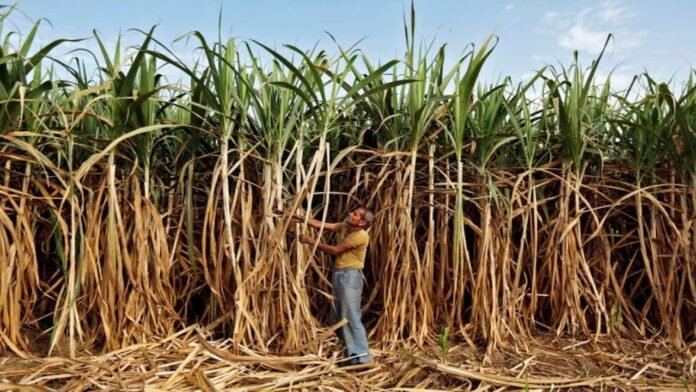A drop in sugarcane production is pushing up sugar prices as sugar mills gear up to supply more ethanol, a byproduct of sugarcane, to oil marketing companies.
Against 3.2 million tonnes in 2021-22 (marketing year from October to September), the government has fixed an allotment of 4.5 million tonnes of ethanol in 2022-23.
With sugar prices ruling below the cost of production of the mills, the diversion of sugarcane products for ethanol production helps sugar mills to maintain a steady income.
While the cost of sugar production is around Rs 36 per kg, the wholesale prices are in the range of Rs 31-32 per kg.
In 2022-23, production is expected to be lower by 5 to 10 percent from the previous year. As a result, sugar prices have moved up to Rs 34-36 per kg from Rs 31.50 to 32.50 per kg.
“There is a decline in sugarcane crop in Maharashtra and Karnataka. The output in Uttar Pradesh is OK,’’ said Atul Chaturvedi, executive chairman of Shree Renuka Sugars. Maharashtra and Uttar Pradesh are the major sugarcane producers, followed by Karnataka.
In 2022-23, the expected production is around 32.5 million tonnes with an opening stock of 7 million tonnes. The government has fixed a lower quota of 6 to 6.2 million tonnes for exports, considering the availability of sugar.
As per the data of the Indian Sugar Mills Association (ISMA) last year sugar availability was 43.946 million tonnes with a production of 35.760 million tonnes and an opening stock of 8.18 million tonnes. Since domestic consumption is in the range of 27 to 28 million tonnes, the government released more quantity for exports to stabilise prices. Export reached an all-time high of 11 million tonnes.
“In addition to India, there is a sugar shortfall this year and in several other countries like Thailand and European Union which has resulted in the rise in world sugar prices,’’ Chaturvedi said. India is the second biggest sugar producer after Brazil.
When sugar prices are going south, the mills can compensate it by producing more ethanol, which fetches better prices. “But when the sugar prices are rising, the mills will have to find the right balance between sugar and ethanol production. The prices of ethanol may need to be revised,’’ he said.
Last year, the government allowed production of ethanol from sugarcane and B- molasses, a by-product. These products have higher sucrose content and hence were used more for sugar production.
In other words, higher ethanol production can come at the expense of sugar output of a mill. Until 2022, sugar mills were churning out ethanol from C-molasses that have poor sugar content.
Ethanol blending with petrol
Ethanol supply is expected to rise in the coming years as the Centre is keen on checking a soaring fuel bill by blending ethanol with petrol. The blending level is likely to increase from 10 to 12 percent this year. Insufficient availability of ethanol had kept the blending levels below 10 percent in the past few years. The government has targeted a blending level of 20 percent by 2025.
Many major sugar mills are expanding their ethanol production capacities to cater to future requirement.
“Ethanol blending programme will help in value addition and maintaining the financial stability of the sugar mills and is good for the sugar industry,’’ said R L Tamak, ED and CEO of DCM Shriram Ltd.
The government reckons that higher income from the sale of ethanol to oil marketing companies will help in settling the dues of sugarcane farmers in time. But the 50 million farmers are demanding a raise in the minimum selling price (MSP) of sugar.
Prices
“While the fair and remunerative price (FRP) of sugarcane is revised every year, the MSP has not seen a change for the last few, years,’’ said Praful Vithalani, chairman of All India Sugar Trade Association (AISTA).
The FRP was revised to Rs 305 per quintal for 2022-23 from Rs 290 in the previous year. The MSP has remained at Rs 3100 per quintal.
“We want it to be increased to Rs 3,400 per quintal as we are selling at 10 per cent below cost of production,’’ said Vithalani, adding that the world average cost of production is Rs2,600 to Rs. 3,000 per quintal.
The annual growth in domestic consumption of sugar has remained below 5 percent while the production growth has been in double digits in the last few years.





